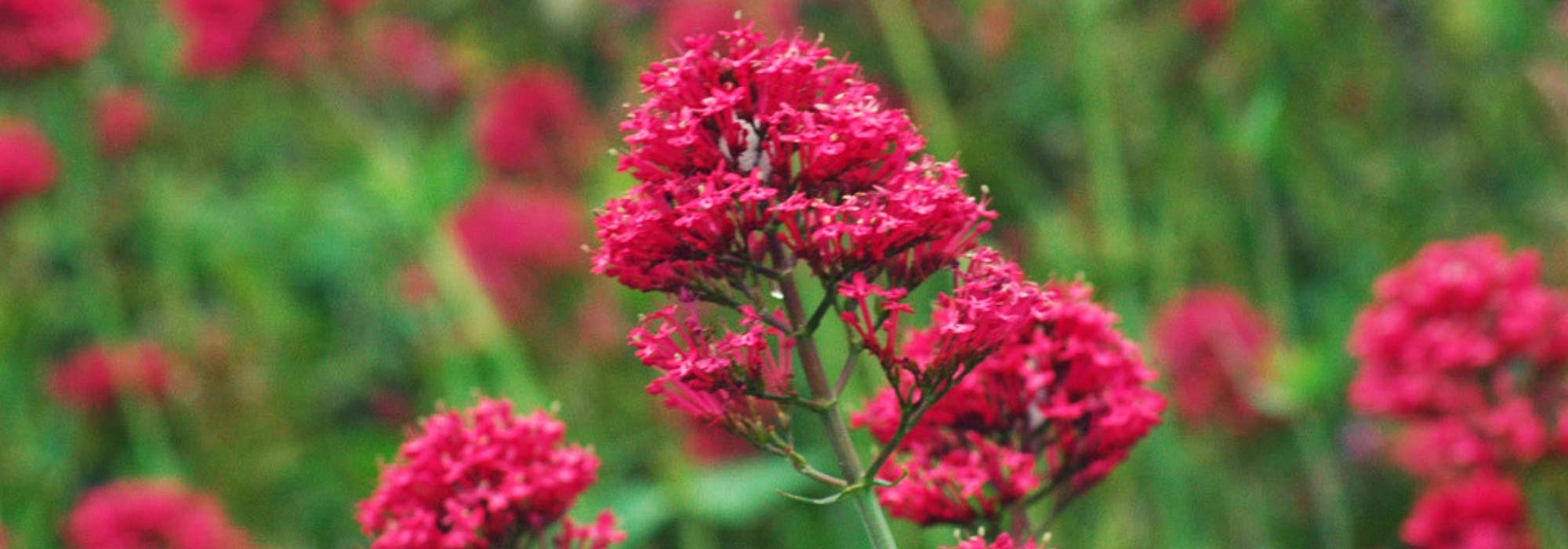
Spanish Lilac, Valerian: Sowing, Planting and Care
Contents
Valerian or Centranthus in a nutshell
- Valerian is a floriferous perennial plant with a very long flowering period of pink, red, or white from May to October.
- It offers flowers for nearly 6 months out of 12 without requiring maintenance.
- Not demanding regarding soil type, as long as it is well-drained, it naturally grows in dry, poor, sunny rocky soils.
- Hardy, it withstands temperatures down to -20°C in winter without flinching.
- A lovely almost foolproof plant, typical of cottage gardens and vicarage gardens, where it self-seeds abundantly.
A word from our expert
Valerian or Centranthus is not just a plant to combat fatigue! It is also a beautiful essential perennial in cottage gardens and herb gardens.
We distinguish between garden valerian or red valerian (Centranthus ruber), which thrives in poor, well-drained soils, even dry ones, and especially in full sun, and its cousin, common valerian (Valeriana officinalis), which, in terms of cultivation, prefers cooler, more fertile soils and partial shade.
Both are easy-to-cultivate perennials that self-seed wherever they please in rockeries, perennial borders, slopes, and on old walls, requiring no care and offering nearly 6 months of flowering out of 12!
The flowers of garden valerian, white, pink, or red, appear abundantly from May until early autumn.
Valerian is a medicinal plant used in capsules and herbal teas, with roots that have anti-stress benefits that aid sleep.
Highly floriferous, hardy, and low-maintenance, often with a wandering nature, valerian is one of those almost foolproof perennials that deserves a place in every garden. Discover how to plant common valerian, perform pruning on garden valerian, or even sow valerian seeds!
Description and Botany
“`html
Botanical data
- Latin name Centranthus
- Family Caprifoliaceae, Valerianaceae
- Common name Centranthus, False valerian, Red valerian, Spanish lilac, Jupiter's beard, Cat's herb
- Flowering from May to autumn
- Height 0.45 to 1m
- Exposure sun or partial shade
- Soil type All, well-drained
- Hardiness -20°C
The Centranthus or Valerian is a herbaceous perennial plant that has recently been classified in the Caprifoliaceae family alongside honeysuckles, rather than in the Valerianaceae family like its close cousin, the common valerian (Valeriana officinalis).
It naturally grows in pebbles as well as in clay, in undergrowth, wet meadows, torrent banks, or along roads, on slopes and arid rockeries in mountainous regions worldwide, particularly in the Mediterranean regions from southern Europe to Asia Minor. It has naturalised in many areas of France.
The genus Centranthus comprises 8 species of perennials, annuals, or biennials. The few cultivated species are perennials valued for their flowering.
The most widespread species is Centranthus ruber, the Red valerian, also known as Garden valerian or Spanish lilac and its cultivars. The common valerian or “All-heal”, which belongs to a different genus, Valeriana, is also frequently found in our gardens where it has been cultivated for its medicinal properties since antiquity.
On a woody, fragrant stump anchored on short rhizomes, the Valerian rises in a beautiful rounded, bushy, and branched tuft, with a loose upright habit. The plant has a somewhat gangly appearance. It typically reaches 60 to 80 cm in height with a diameter of 50 cm, but can grow up to 1 m tall if the soil is suitable. Growth is rapid, and the plant has a good longevity in dry, poor soil.
The roots of Centranthus emit a characteristic scent, somewhat unpleasant but so attractive to felines that it has earned the nickname “Cat’s herb”.
The cylindrical, smooth, hollow, fleshy yet brittle stems, covered in bloom and branched at the tips, bear small deciduous to semi-persistent leaves depending on the mildness of the climate.

Several colours of Garden valerian: Centranthus ruber ‘Albus’, Centranthus ruber, Centranthus ruber ‘Coccineus’ (photo PAP)
The glabrous, fleshy leaves are opposite along the stems, simple, entire, or pinnatisect towards the base of the tuft, ovate, elliptical to lanceolate. They consist of 3 to 10 pairs of dentate leaflets. The basal leaves are short-petiolate, while the upper ones are sessile and sheathing.
Thick, they measure from 2 to 20 cm long and are jade green, bluish-green, or grey-green. The foliage of the Valerian is aromatic, and although it has a rather unpleasant smell, it can be incorporated into salads. While the roots of valerian are primarily used for their therapeutic virtues, the foliage also possesses medicinal, antispasmodic, and sedative properties.
Very floriferous, the Valerian offers a profusion of slightly fragrant flowers from spring to late summer.
From May until the first frosts in October, tiny star-shaped flowers, 2 to 5 mm long and flattened, appear above the foliage, grouped in branched corymbs or compact panicles at the tips of the fleshy stems.
The flowers of the Red valerian take the shape of a funnel. The corolla, composed of 5 petals, is distinguished from other valerian species by its long spur filled with nectar.
The flowering of valerian typically displays all shades of pink, ranging from crimson pink to rosy lavender, including red, and they are sometimes white or a lovely rosy white in the common valerian.
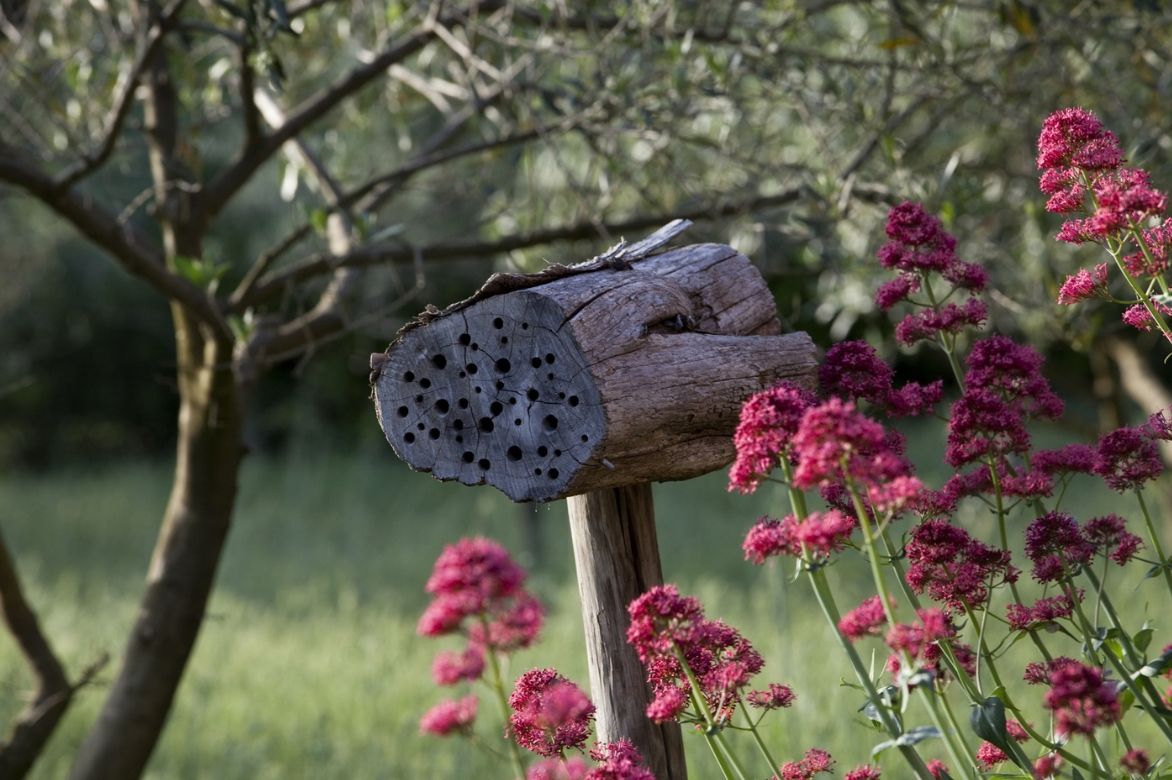
(©Philippe Giraud-Biosphoto)
They emit a subtle sweet and penetrating fragrance when they bloom and make excellent cut flowers for summer bouquets.
This abundant flowering and particularly nectar-rich attract the incessant flight of butterflies, bees, and bumblebees throughout the summer.
These delicate little flowers give way to small feathery achenes that the wind disperses here and there, sometimes even in quite curious places; it is not uncommon to find them between the stones of a wall and in the tiniest sunny corners!
Hardy beyond -20°C, resistant to summer drought and sea spray, the Valerian can be planted anywhere in France. Not demanding regarding soil type, it thrives in full sun, whether in stony or clayey soil, although it prefers light, calcareous, poor, and dry soils. Its cousin, the common valerian, prefers cool, moist soils and ideally partial shade.
The Centranthus is an almost foolproof plant, a boon for gravel gardens, dry rockeries, to flower the gaps in dry stone walls. It is an essential perennial in a wild garden with a rustic appearance or a vicar’s garden where it will add life to a large rockery, a large perennial bed, or to dry, inhospitable slopes that are well sunlit.
Centranthus ruber and Valeriana officinalis are both known for their sedative and relaxing properties.
“`
Main species and varieties
Few species are grown in our gardens, with Centranthus ruber being the main one, known as Garden Valerian or Red Valerian. This hardy species comes in several cultivars with pink or white flowers. Common Valerian is also frequently found by ponds, in shaded areas, or in our vegetable gardens.
Both bloom abundantly from mid-spring until the end of summer and thrive in well-drained soil.
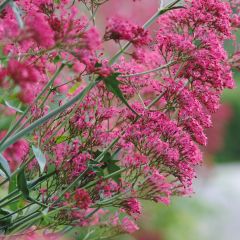
Centranthus ruber
- Flowering time June to September
- Height at maturity 70 cm
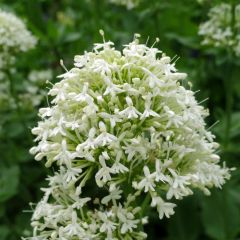
Centranthus ruber Albus
- Flowering time August, September
- Height at maturity 80 cm
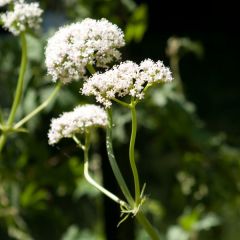
Valeriana officinalis
- Flowering time June to August
- Height at maturity 1,20 m
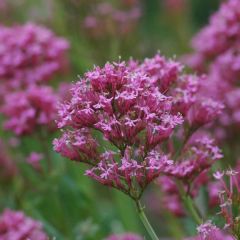
Centranthus ruber Kempenhof
- Flowering time August to October
- Height at maturity 80 cm
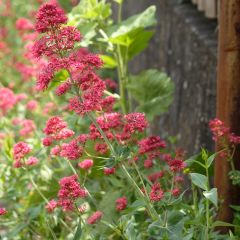
Centranthus ruber Coccineus
- Flowering time June to October
- Height at maturity 80 cm
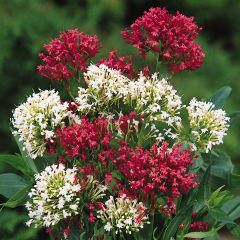
Centranthus ruber Star Ruber Mixed - Red Valerian Seeds
- Flowering time June to November
- Height at maturity 1 m
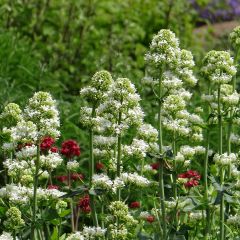
Snowcloud Garden Valerian Seeds - Centranthus ruber
- Flowering time June to November
- Height at maturity 1 m
Discover other Centranthus - Valerian
View all →Available in 3 sizes
Available in 0 sizes
Available in 2 sizes
Available in 2 sizes
Available in 1 sizes
Available in 1 sizes
Available in 1 sizes
Available in 1 sizes
Available in 2 sizes
Available in 1 sizes
Planting
Where to Plant Valerian or Centranthus
Hardy down to -20°C, drought-resistant in summer and tolerant of sea spray, Valerian adapts to all types of climates. Undemanding in terms of soil type, it is a frugal plant that thrives in challenging conditions. It grows naturally in poor, dry, and sunny soils. Although it can tolerate any well-drained soil, it prefers dry, light, stony, even calcareous and low-fertility soils. Provide it with full sun or slightly shaded exposure: it sometimes tends to lean to seek out light.
While it can also grow in any soil, common valerian will thrive more in rich, cool, and moist but well-drained soil and in partial shade.
With its rustic and warm silhouette, Valerian adds charm to informal, cottage-style gardens, where it self-seeds spontaneously among trees and bushes.
With its rapid growth, garden Valerian is ideal for quickly flowering a poor bank, an unsightly old wall, or a brand-new garden; it is a born coloniser!
It stands out in Mediterranean gardens, in dry or gravel gardens, in borders, on slopes, in dry rockeries, and in perennial beds scorched by the sun, always bringing a sense of lightness to summer scenes.
Common valerian will find its place by ponds, in shaded woodlands, or in a bed or cool rockery.
Melliferous to the core, valerian flowers are useful in the vegetable garden.
When to Plant Valerian
Valerian can be planted either in spring, from February to May, or in autumn, from September to November, avoiding periods of drought and frost.
How to Plant Valerian
In the Ground
To plant garden Valerian or Centranthus ruber, do not add compost or fertiliser at planting; just a handful of pebbles or a scoop of gravel to improve drainage, as it has a clear preference for light soils.
Conversely, when planting common valerian, there is no need to add sand; instead, add compost, as it prefers rich, compact but well-drained soils that are slightly cool and moist.
For a quick and beautiful effect, plant at least 7 to 9 plants per m², spaced 30 to 60 cm apart in all directions.
- Soak the pots in a basin of water for 15 minutes before planting
- Dig a hole 2 to 3 times the volume of the root ball
- Loosen the soil well, carefully removing roots and stones
- Spread a good layer of gravel and sand at the bottom of the hole
- Place the root ball in the middle of the hole
- Fill the hole with the extracted soil, possibly mixed with river sand
- Lightly compact
- Water once a week to ensure establishment
When and how to sow valerian seeds
How to sow valerian under cover
Valerian is sown from March to June. You can collect seeds from your garden from June until the frost or choose from our collection of false valerian or centranthus seeds. Seed germination takes 21 to 30 days.
- Sow your seeds generously in a seed tray filled with potting soil
- Lightly cover the seeds with potting soil
- Lightly press down and water thoroughly with a fine spray
- Place the seedlings in light, without direct sunlight, at a temperature of 18°C to 20°C
- Transplant the seedlings when they are about 5 cm tall into pots
- Install the young plants in the garden at the end of May to early June when temperatures are warm enough
- Space your plants about 30 cm apart
How to sow valerian in open ground
If the plants start to develop the following spring, you will need to be patient as they will not flower until three years later.
- In May, in well-warmed and well-worked soil, sow your valerian seeds generously
- Cover them with a thin layer of potting soil
- Press down
- Water thoroughly with a spray and keep the soil moist until germination
- Thin out by keeping one plant every 30 to 60 cm
Maintenance, pruning and care
How to Care for Garden Valerian or False Valerian
Once well established, Garden Valerian or Red Valerian knows how to be forgotten. It is so robust that it can do without watering, unless planted in the height of summer, and requires almost no maintenance. In well-drained soil, Valerians have no enemies and are insensitive to diseases.
Water once a week during the first summer following planting, but avoid overwatering.
No fertiliser is necessary as Garden Valerian is an undemanding plant.
The tallest Valerians may tend to flop and require staking.
Regularly remove faded flowers to encourage the renewal of flowering, and after the first bloom, cut back the withered stems by half to promote a resurgence at the end of the season.
It tends to self-seed easily in the most unexpected places if you haven’t cut all the flower spikes. Leave them to seed if you wish to benefit from spontaneous sowing.
How to Care for and Harvest Common Valerian
Common Valerian, unlike its sap sister, is more demanding: make organic fertiliser applications in spring and autumn.
Water it more regularly in summer as it prefers soil that remains cool.
Harvesting Valerian Roots
The roots of Common Valerian contain well-known active principles for their sedative and calming properties.
In autumn, using a fork, harvest its roots from well-established clumps. They are best consumed fresh, usually in herbal tea, but their flavour is very bitter.
Pruning Valerian
Cutting back is recommended after flowering as it encourages the growth of new, more elegant foliage.
At the end of winter, in February-March, using pruning shears, cut back the entire clump to 10-20 cm above the ground to promote branching.
Every 2 to 3 years, in spring or autumn, divide the clumps to rejuvenate the plants.
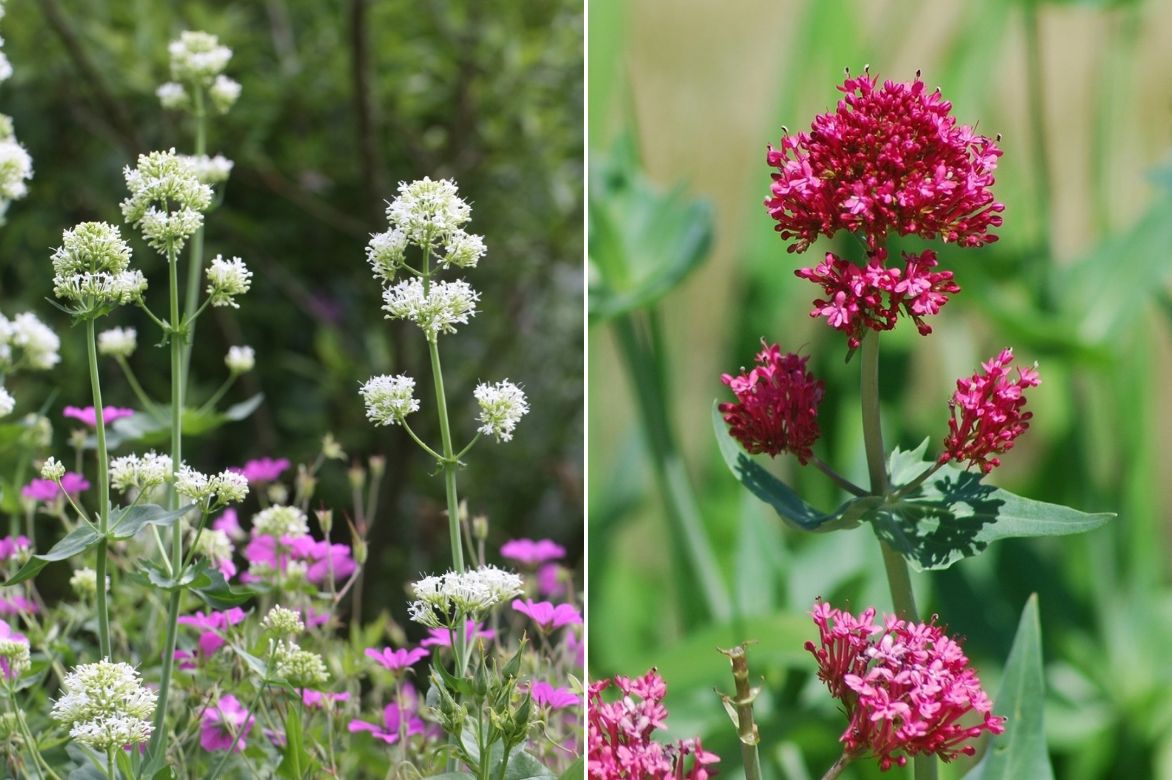
Multiplication
Les Valerianas self-seed abundantly and spontaneously, often in unexpected places if not cut back immediately after flowering. Seeds are harvested at ripeness, if you haven’t cut all the flower stems; otherwise, choose from our valerian seeds. Dividing clumps is also easy.
By sowing
Multiplying valerian by sowing is therefore a simple operation, but you can also collect and transplant spontaneous seedlings when the young plants have 5 or 6 leaves. Be aware that spontaneous seedlings rarely produce plants true to the parent, as the colours are random. To successfully sow valerian seeds, read our tips above.
Learn more in our tutorial: Valerian, Spanish Lilac: how to propagate it?
By division
Clumps of Valerian are divided in March from well-established mature clumps.
- Using a fork, gently lift the stump
- Separate a few clumps with roots
- Replant immediately in well-prepared soil
- Water regularly to encourage recovery
Associating valerian with the garden
With its slightly loose silhouette, the Valerian is a reliable choice for blurred gardens, cottage gardens, wild spaces, and vicar’s gardens. Easy to pair, Valerian evolves freely in a garden, quickly filling empty spaces between vicar’s garden perennials like hollyhocks and foxgloves, or summer-flowering shrubs such as lavateras or hibiscus.
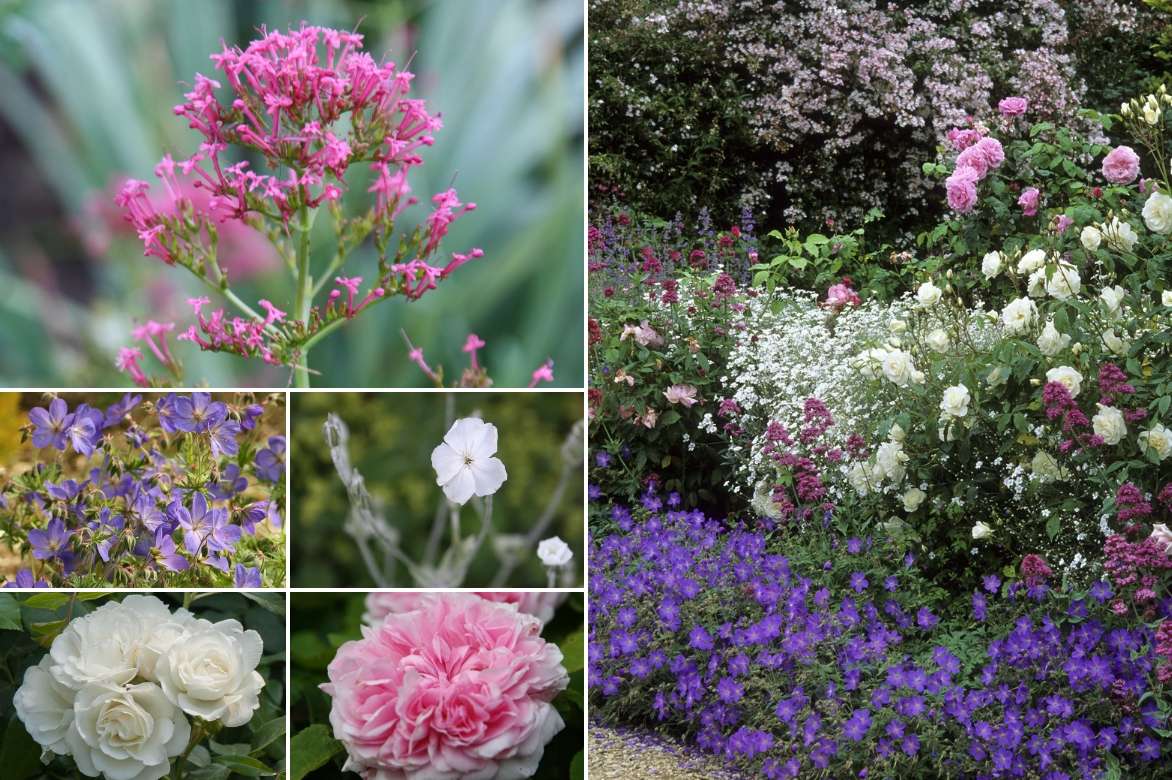
An example of a cottage association: Centranthus ruber, Hardy geranium ‘Johnson’s Blue’, Rose ‘Iceberg’ and a pink rose like ‘Jacques Cartier’, Lychnis coronaria ‘Alba’ against a backdrop of Deutzia ‘Mont Rose’ (photo scene ©Andrew Lawson Flora Press – Biosphoto)
It is essential in a pink garden or white garden, where it adds a charming and romantic touch.
In a dry naturalist garden, it can be paired with spurges, centauries, poppies, and Damascus nigellas.
Its slightly diffuse habit will benefit from being combined with more sculptural plants like bearded irises, ornamental garlic, or sea holly.
For a profusion of flowers in an impressionistic composition, surround a few clumps of valerian with easy-going perennials that bloom generously, such as potentillas and hardy geraniums, which will spread in all directions and flower from May to August with little maintenance.
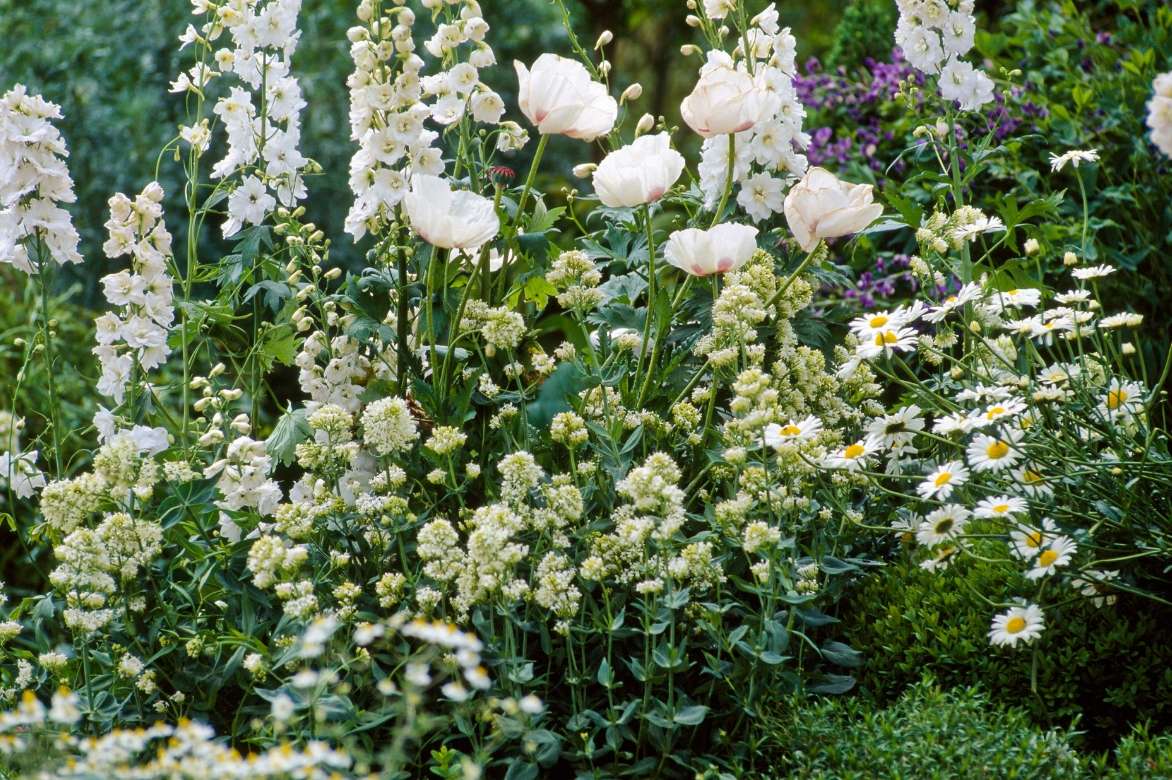
Another example of a more tonal association: white delphinium like ‘Galahad’, Oriental poppy like ‘Perry’s White’, Centranthus ruber ‘Albus’, and a daisy like Leucanthemum superbum ‘Becky’
With its true pink flowers, Valerian stands out in soft colour themes: opt for delicate combinations with silver-leaved plants like wormwoods, Echinops sphaerocephalus, helichrysum, dianthus, sedum, or lavenders.
In the height of summer, its soft hues will pair well with yarrow, monardas, agastaches, coreopsis, gauras, phlox, Spanish lawn, and cosmos. You can also mix valerian with its white-flowered cousins to create beautiful colour masses.
Red centranthus or red valerian will be perfect surrounded by herbaceous peonies and planted at the base of roses, adding an extra touch of grace and colour.
On a low wall, valerian will thrive alongside alyssum, campanulas, or aubrietas.
Useful resources
- The most beautiful collection of valerian is with us!
- Valerians stand out in a pink garden and in so romantic atmospheres!
- What to plant alongside centranthuses in a sunny naturalist garden?
- Subscribe!
- Contents
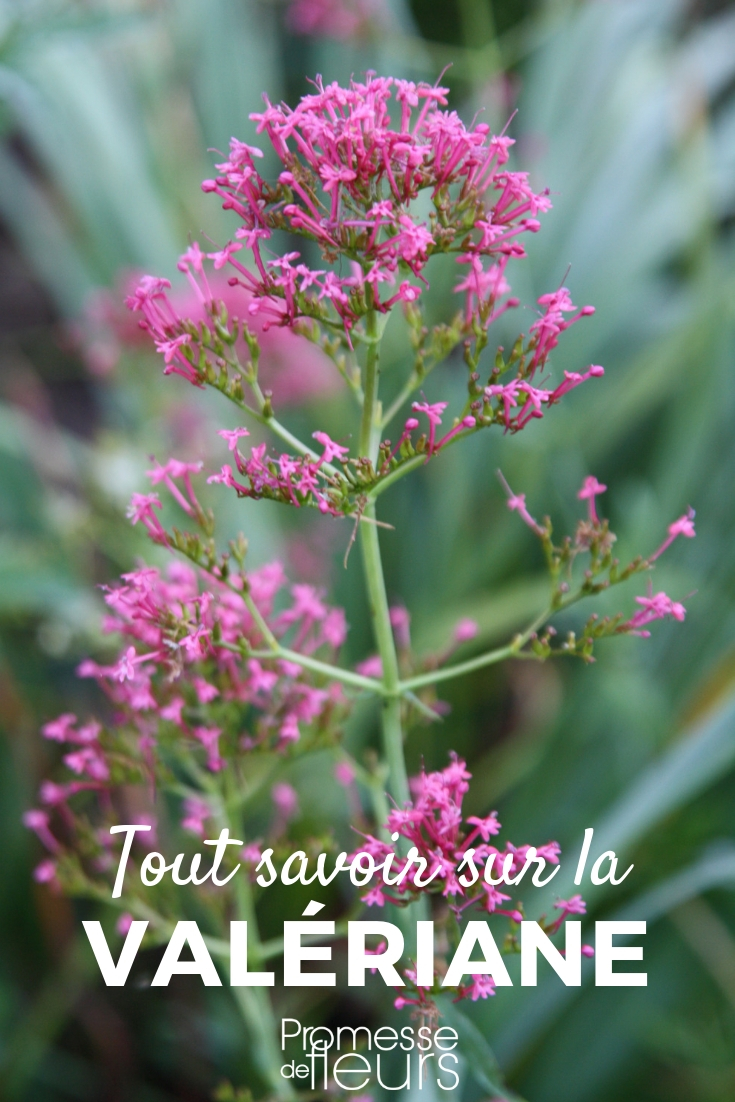
































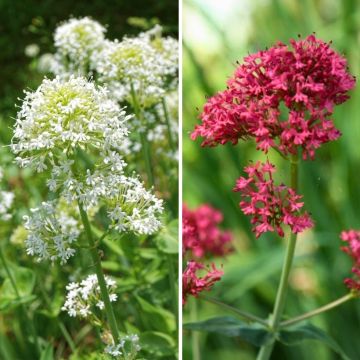


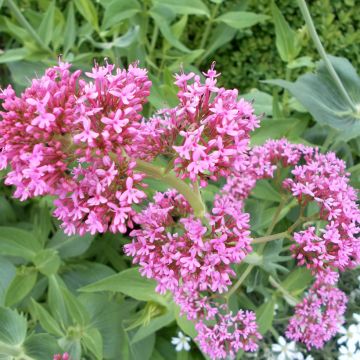
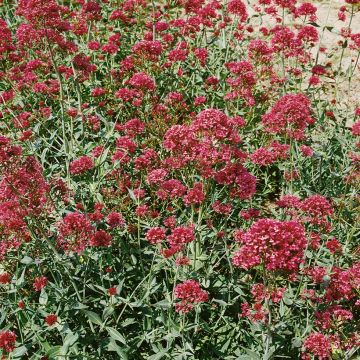

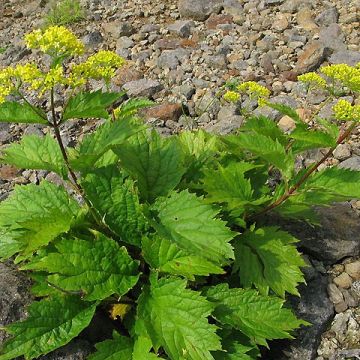


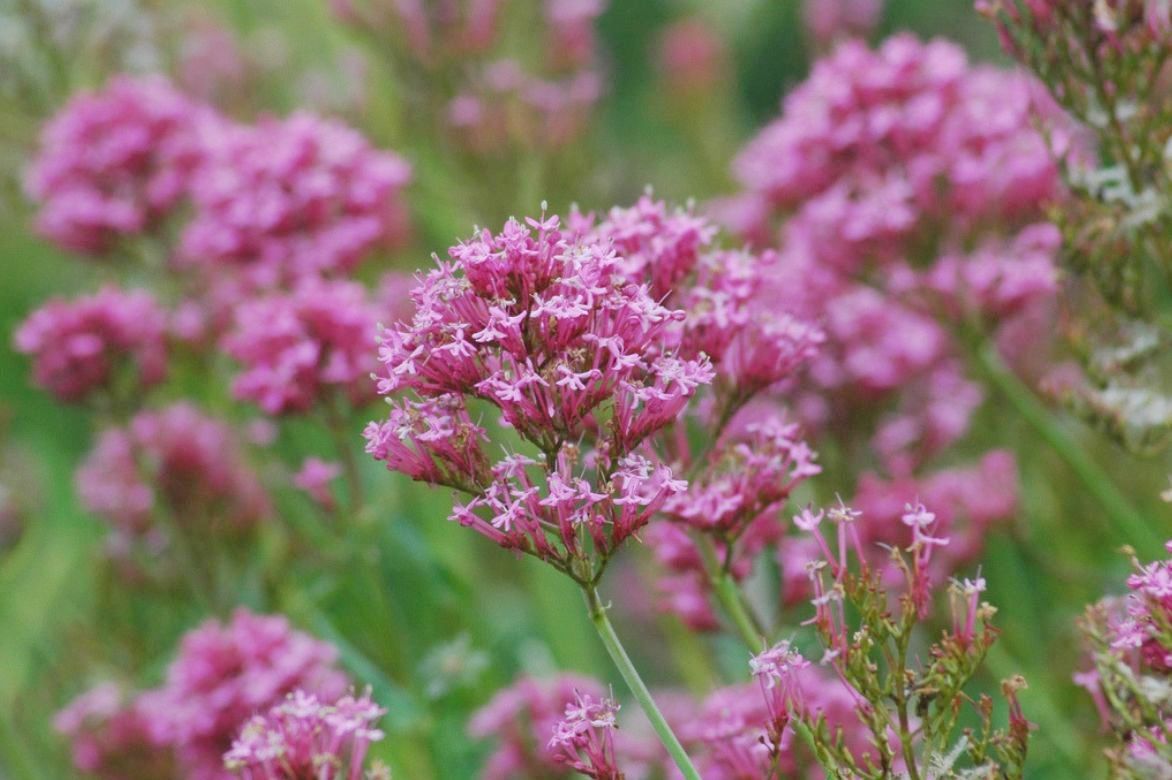
Comments